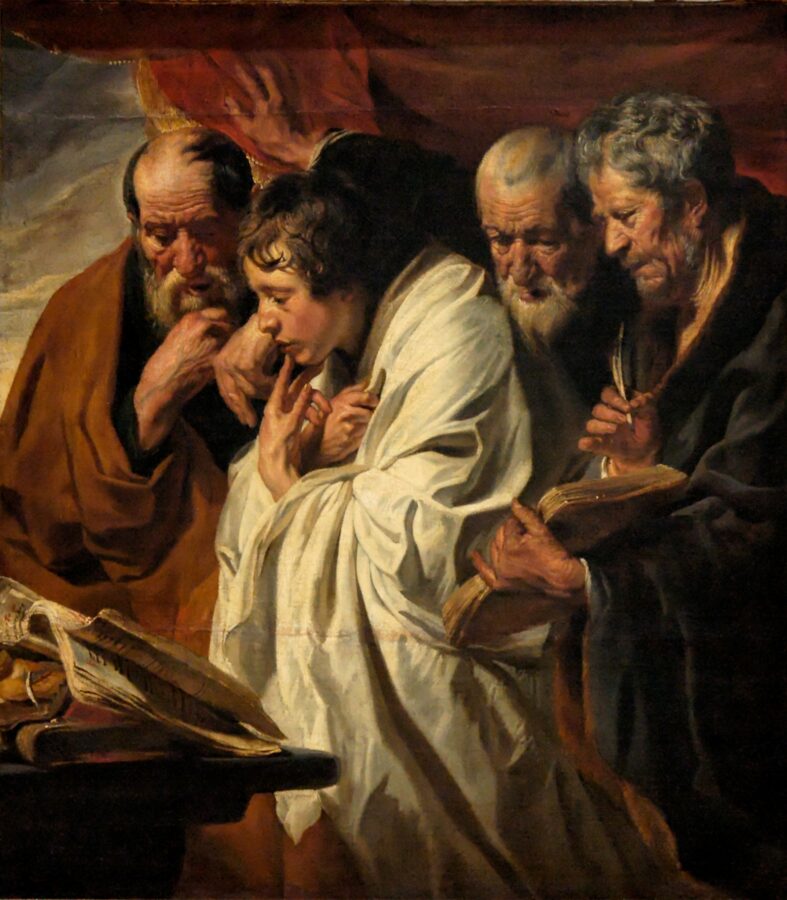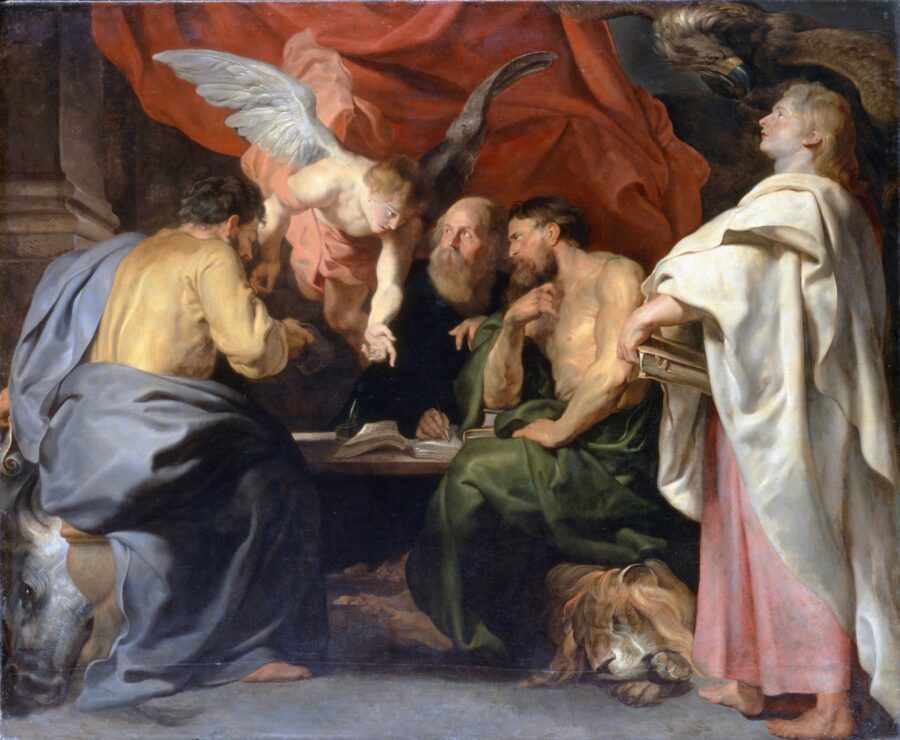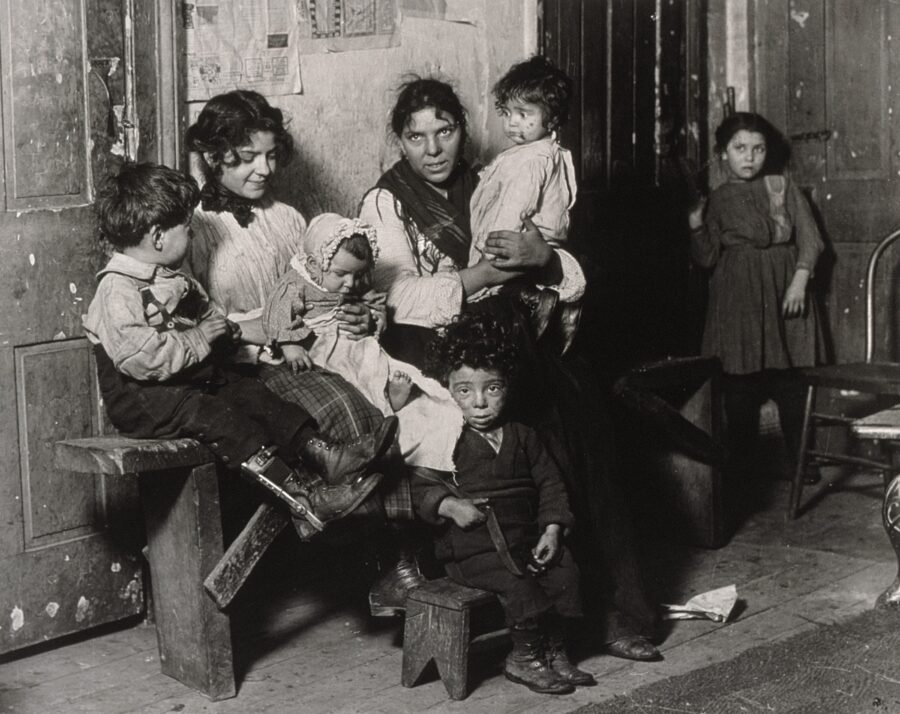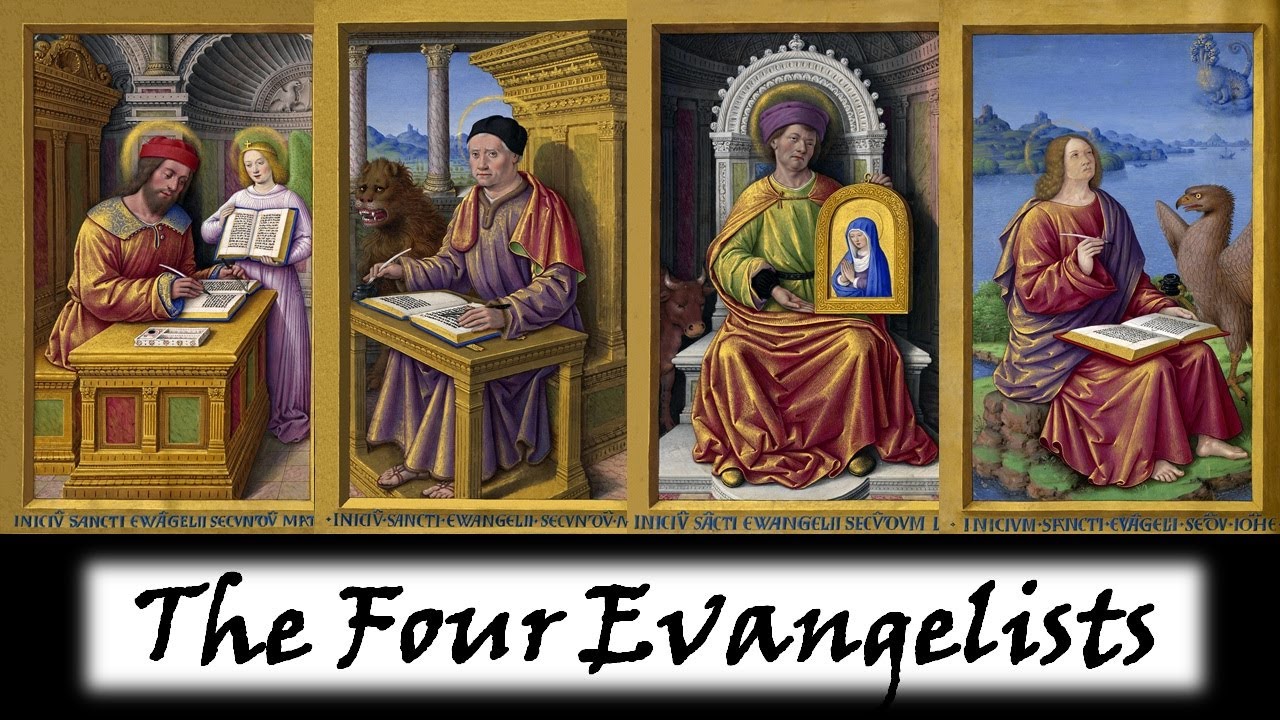
Meaning of the Term “Gospel”
The word gospel literally means “good news.” It comes from the Old English godspel (“good story”), which was used to translate the Greek term euangelion, meaning “good news” or a reward for bringing good news. In the New Testament context, the gospel refers to the good news about Jesus Christ – specifically, the message of His life, death, and resurrection which brings salvation to those who believe. In the earliest Christian usage (as seen in the letters of Paul), “the gospel” was the authoritative proclamation (kerygma) that through Jesus’s sacrificial death and resurrection, God offers forgiveness and eternal life to humanity. Thus, the phrase “gospel of Jesus Christ” simply means the good news about Jesus Christ and what He accomplished for the sake of humanity’s salvation.
Over time, the term gospel also came to denote written accounts of that good news. By the 2nd century A.D., euangelion was used to refer to the books that record the story and teachings of Jesus. In this sense, a gospel is a narrative of Jesus’s deeds and words, culminating in His trial, crucifixion, and reports of His resurrection. In Christianity today, the term “Gospel” can mean both the message of salvation through Christ and the specific books of the Bible that recount Jesus’s life. Both usages center on the idea of “good news” – whether it’s the proclaimed message of hope or the written story of Christ.
The Four Gospels in the Bible
In the Christian Bible, there are four canonical gospels – accounts that narrate the life, ministry, death, and resurrection of Jesus. These four books, named Matthew, Mark, Luke, and John, appear at the beginning of the New Testament. All Christians, across various traditions, accept these four as the authentic Gospel accounts included in Scripture. Each Gospel is traditionally attributed to one of Jesus’s early followers or their associates, hence they are often referred to as the work of the four Evangelists (Matthew, Mark, Luke, and John). Notably, many other writings with the title “gospel” (such as the Gospel of Thomas, Gospel of Mary, etc.) were composed in later centuries, but these are non-canonical – they are not part of the Bible and were not accepted into the official New Testament canon.
The Four Evangelists, a 17th-century painting by Jacob Jordaens, depicts the traditionally named authors of the biblical Gospels – Matthew, Mark, Luke, and John. These four books are the canonical Gospels of the New Testament, recounting the life and teachings of Jesus Christ. They have been central to Christian faith and practice throughout history.


While all four biblical Gospels tell the story of Jesus, they each have unique perspectives and emphases. Matthew, for example, presents Jesus as the Jewish Messiah and frequently references the Hebrew Scriptures; Mark is the shortest and most fast-paced account, emphasizing Jesus’s actions; Luke provides a detailed and orderly narrative (addressed to a Gentile audience) and highlights Jesus’s compassion for the marginalized; John stands apart with a more theological tone, focusing on Jesus’s divinity and containing lengthy discourses not found in the others. Despite their differences, the four Gospels collectively provide a rich, composite picture of Jesus’s identity and mission.
The Synoptic Gospels and John
The first three Gospels – Matthew, Mark, and Luke – are known as the Synoptic Gospels (“synoptic” meaning “seen together”) because of their similar structure and content. These three include many of the same stories, often in the same sequence and with comparable wording. This suggests they drew from common sources or one another (a puzzle known as the “Synoptic Problem” in biblical studies). The Synoptic Gospels present a broadly common view of Jesus’s ministry in Galilee and Judea, including many shared parables and miracles.
In contrast, the Gospel of John is quite distinct. John’s content is largely unique – it omits many episodes found in the synoptics and includes long theological discourses of Jesus (such as the “I am” statements) and other material not recorded elsewhere. For example, events like the calming of the storm are told in all three synoptics but not in John, whereas John includes the raising of Lazarus and the extensive Farewell Discourse which the others do not. John’s Gospel also has a different narrative flow (fewer but longer episodes, and a focus on events in Judea and Jerusalem). The term “synoptic” highlights the high degree of overlap among Matthew, Mark, and Luke, whereas John stands on its own, offering a supplementary perspective on Jesus’s identity as the Son of God.
Authorship and Dating of the Gospels
Historically, each of the four canonical gospels has been attributed to a specific author (the “Four Evangelists”), but modern scholarship notes that the texts themselves were written anonymously and later given these traditional names. The four gospels were composed in the first century A.D., probably between roughly 66 A.D. and 110 A.D.
Gospel of Matthew
Tradition ascribes this Gospel to Matthew, one of the twelve apostles of Jesus (formerly a tax collector). According to early church testimony, Matthew might have compiled Jesus’s sayings in Hebrew or Aramaic, though the Gospel we have is in Greek. The text itself does not name its author and is considered anonymous by scholars. Most modern scholars date Matthew’s Gospel to around 80–90 A.D., given that it likely used Mark as a source. It may have been written in or for a Christian community in Syria or another Eastern Mediterranean region, though the exact location is uncertain.
Gospel of Mark
The earliest Gospel is Mark, believed to be written around 66–70 A.D. (shortly after the Roman war that led to Jerusalem’s destruction). Tradition holds it was written by John Mark, a companion of the apostle Peter, essentially recording Peter’s eyewitness accounts. Early sources claimed Mark was Peter’s “interpreter.” However, like the others, the Gospel of Mark internally does not name its author and is anonymous. Many scholars think Mark was likely composed in Rome for a Gentile (non-Jewish) audience, due to its explanations of Jewish customs and its association with Peter’s time in Rome.
Gospel of Luke
This Gospel (and its sequel, the Acts of the Apostles) is traditionally attributed to Luke, a physician and companion of Paul the Apostle. Luke’s account is notably addressed to “Theophilus” and written in educated Greek style, suggesting the author was a well-educated Gentile Christian. The Gospel of Luke is believed to have been composed around the late 1st century (often estimated ~80–90 A.D., after Mark) because Luke incorporates material from Mark and possibly another shared source with Matthew. The exact place of writing for Luke is not confirmed – scholars have proposed locations ranging from Antioch (Syria) to Greece, or generally somewhere in the Greek-speaking eastern Roman Empire. As with the others, the text itself is anonymous, but early Christian tradition unanimously credited it to Luke “the beloved physician.” Luke’s Gospel explicitly aims to provide an “orderly account,” and it emphasizes that it is based on eyewitness reports and careful investigation (see Luke 1:1–4).
Gospel of John
The fourth Gospel was likely the last written, commonly dated to about 90–100 A.D. It is distinct in style and content, suggesting it was composed independently of the synoptics. The traditional author is John the Apostle (the son of Zebedee), who was one of Jesus’s closest disciples. The Gospel itself hints that it is based on the testimony of “the disciple whom Jesus loved,” often identified with John. However, the work is formally anonymous and its precise authorship has been debated. Many modern scholars think the final form of John’s Gospel may have involved multiple stages of composition, perhaps within a Johannine community of believers associated with John. Early church writers affirmed that John wrote this Gospel, supposedly when he was living in Ephesus in Asia Minor. In any case, John’s Gospel exhibits a developed theological reflection on Jesus’s identity and was likely written for an audience of both Jews and Gentiles near the end of the first century.
It’s important to note that none of the Gospels explicitly name their author in the text, and modern critical scholarship generally concludes that the canonical titles (Matthew, Mark, Luke, John) reflect later church tradition. The traditional attributions, nonetheless, indicate how early Christians understood the origins of these writings – associating them with apostolic figures or their close companions. Despite questions of authorship, the four Gospels were all composed within several decades of Jesus’s lifetime (by roughly the end of the 1st century A.D.), and they serve as the foundational sources for information about Jesus in the Christian faith.
The Social Gospel Movement
While the term “gospel” primarily refers to the Christian message and the four biblical books, it has also inspired broader movements applying Christian principles to society. One notable example is the Social Gospel movement in the late 19th and early 20th centuries. The Social Gospel was a religious social-reform movement, prominent in the United States roughly from the 1870s through the early 1920s. Advocates of the Social Gospel believed that the “good news” of Christianity had implications not just for personal salvation, but for social justice and improving societal conditions. They interpreted the biblical vision of the “Kingdom of God” as demanding social as well as individual salvation.
In practice, Social Gospel proponents—often liberal Protestant pastors and theologians—worked for the “betterment of industrialized society through application of biblical principles of charity and justice.” They tackled the pressing social ills of the Gilded Age, such as poverty, inequality, poor working conditions, and lack of labor rights. Key leaders like Washington Gladden and Lyman Abbott preached that Christianity should actively engage in solving social problems. Influential writings, such as Charles Sheldon’s In His Steps (1896) – famous for the question “What would Jesus do?” – and Walter Rauschenbusch’s Christianity and the Social Crisis (1907), encapsulated the ethos of the movement.


The Social Gospel movement addressed injustices of early industrial society, such as child labor and harsh working conditions. Social Gospel advocates fought for reforms like abolishing child labor, establishing a shorter workweek, a living wage, and better safety regulations – applying Christian ethics of compassion and justice to these social challenges.
The Social Gospel movement made a lasting impact. By the 1930s, many of its ideals (for example, labor reforms and welfare provisions) had influenced policy, notably through initiatives like the U.S. New Deal legislation. Although the specific movement waned, it set the stage for future faith-based social activism. Elements of the Social Gospel can be seen echoed in later movements, including civil rights (Martin Luther King Jr., for instance, was influenced by Social Gospel ideas) and various church-based initiatives for economic justice and community service throughout the 20th century.
Modern Applications and Relevance of the Gospel
Beyond its historical movements, the Gospel message continues to have modern applications in various aspects of Christian life and society. For many Christians today, “living out the gospel” means embodying the teachings of Jesus in daily life – showing love, forgiveness, integrity, and concern for others in practical ways. Churches and faith-based organizations often use the inspiration of the gospel to run charitable programs (food banks, hospitals, disaster relief, etc.) and to address social issues like homelessness, addiction, or racial reconciliation. In this sense, the ethics of the gospel (such as caring for “the least of these,” as Jesus taught) remain a driving force for community service and social action, much as they were during the Social Gospel movement.
Moreover, the core message of the gospel – that through Christ there is hope, meaning, and redemption – continues to be spread in contemporary forms. Modern evangelism and missionary work are essentially the communication of the gospel using today’s media and languages. From local congregations to global missions agencies, Christians use television, radio, the Internet, and personal outreach to share the gospel of Jesus Christ with new generations. The rise of digital communication has given the gospel message a worldwide platform: for example, online ministries and social media allow for creative evangelistic efforts reaching people far beyond traditional church walls.
The gospel also finds expression in modern culture, notably through music and art. The genre of gospel music, which originated in the early 20th century U.S., remains popular and has evolved into contemporary styles – its very name reflects its basis in the Christian “good news.” Gospel music, with its themes of hope and praise, has had a significant influence on popular music and has brought the message into mainstream awareness.
In the realm of personal life, the gospel’s emphasis on grace and reconciliation can influence how individuals approach relationships and personal challenges. Concepts like forgiveness, sacrificial love, and hope in suffering (all central to the gospel story) are applied by believers to navigate modern life’s difficulties. Many Christians testify to the continuing relevance of the gospel in providing moral guidance and inner transformation – for instance, breaking cycles of violence or addiction by embracing the gospel’s call to forgiveness and new life.
Finally, the inclusive vision of the gospel has encouraged interfaith dialogue and humanitarian cooperation in our globalized era. While maintaining the distinct message of Jesus, many Christian groups partner with others to combat injustices like human trafficking or to aid refugees, motivated by the gospel’s call to love one’s neighbor. In a world still rife with conflict and inequality, the gospel’s proclamation of peace with God and among people speaks to contemporary longings for unity and purpose. Even in largely secular societies, elements of the gospel message – such as the inherent value of each person, the importance of compassion, and the hope of renewal – continue to resonate and inspire collective efforts for good.
In summary, the gospel is both an ancient message and a present reality. It is the “good news” at the heart of Christianity: that God has acted through Jesus Christ to redeem the world. This message gave rise to the New Testament Gospels, four beloved books that tell the story of Jesus. It has also moved people to practical action, from the Social Gospel reforms of a century ago to myriad acts of service and faith in our day. Whether studied as religious literature, preached from pulpits, or put into practice through charity and justice, the gospel remains a profound force for understanding the past and navigating the present – truly “good news” with enduring significance.





